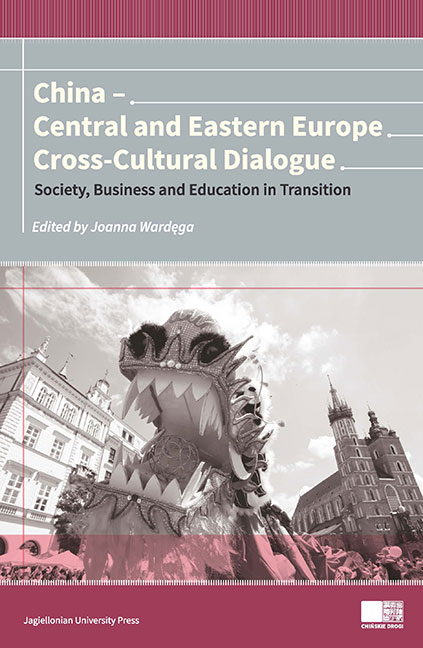Book contents
- Frontmatter
- Contents
- Foreword
- PART I Society and Culture in Transition
- PART TWO Economy and Markets in Transition
- Chinese Economic Influence on the Central and Eastern Europe Countries
- The New Silk Road and its Geopolitical Consequences for Poland
- Comparing Chinese, Japanese and South Korean FDI in Central and Eastern Europe
- Partnership through Investment – Chinese Foreign Direct Investment in CEE Countries
- Chinese Foreign Direct Investments in Europe. The Polish Case
- Fourteen EU States Already in, Japan and USA Still not Interested – What Lies Behind China-led AIIB?
- What Can CEE and China Learn from Each Other in Innovation?
- Comparison of Telecommunications Development Pattern in China and the Republic of Macedonia
- Development of Chinese Mobile Phone Game Market as an Export Opportunity for CEE Mobile Game Producers
- PART THREE Education in Transition
- Contributors
Comparison of Telecommunications Development Pattern in China and the Republic of Macedonia
from PART TWO - Economy and Markets in Transition
Published online by Cambridge University Press: 22 December 2017
- Frontmatter
- Contents
- Foreword
- PART I Society and Culture in Transition
- PART TWO Economy and Markets in Transition
- Chinese Economic Influence on the Central and Eastern Europe Countries
- The New Silk Road and its Geopolitical Consequences for Poland
- Comparing Chinese, Japanese and South Korean FDI in Central and Eastern Europe
- Partnership through Investment – Chinese Foreign Direct Investment in CEE Countries
- Chinese Foreign Direct Investments in Europe. The Polish Case
- Fourteen EU States Already in, Japan and USA Still not Interested – What Lies Behind China-led AIIB?
- What Can CEE and China Learn from Each Other in Innovation?
- Comparison of Telecommunications Development Pattern in China and the Republic of Macedonia
- Development of Chinese Mobile Phone Game Market as an Export Opportunity for CEE Mobile Game Producers
- PART THREE Education in Transition
- Contributors
Summary
Introduction
Telecommunication operators market has been growing fast in the last two decades. Convergent telecommunication operators operated in four major areas: mobile telephony, fixed telephony, broadband or Internet services and lately, delivery of television services over existing telecommunication platforms. The telecommunication industry boomed especially in the mobile and broadband segment. There is a difference in telecommunication in the developed and developing countries.
According to ITU (2015), 3.2 billion people globally are using the Internet by the end of 2015, out of which 2 billion are from developing countries. For every Internet user in the developed world, there are 2 in the developing world. However, 4 billion people from developing countries remain offline, representing 2/3 of the population residing in developing countries. Of the 940 million people living in the least developed countries (LDCs), only 89 million use the Internet, corresponding to a 9.5% penetration rate.
ITU (2015) study also claims that by the end of 2015, there are more than 7 billion mobile cellular subscriptions, corresponding to a penetration rate of 97%, up from 738 million in 2000. Between 2000 and 2015, global Internet penetration grew 7-fold, from 6.5% to 43%. Mobile broadband is the most dynamic market segment; globally, mobile-broadband penetration reaches 47% in 2015, a value that increased 12 times since 2007. The proportion of households with Internet access at home increased from 18% in 2005 to 46% in 2015. Fixed-broadband uptake is growing at a slower pace, with a 7% annual increase over the past three years, reaching 11% penetration by end 2015. The proportion of the population covered by a 2G mobile-cellular network grew from 58% in 2001 to 95% in 2015.
The Peoples Republic of China and the Republic of Macedonia went through fast development phase of telecommunication operators market over the last two decades. Study of the development patterns may give useful information and improve trending ability also uncovering available co-operation possibilities. For the purpose of this article, we compare historical data and trends of the current data on main telecommunication identifiers between the PRC and the Republic of Macedonia. We also add information on historical data and trends of the development of telecommunication systems in the Republic of Slovenia in order to compare results.
- Type
- Chapter
- Information
- China - Central and Eastern Europe Cross-Cultural Dialogue Society, Business and Education in Transition , pp. 291 - 302Publisher: Jagiellonian University PressPrint publication year: 2016



